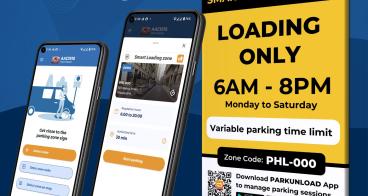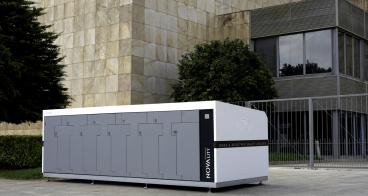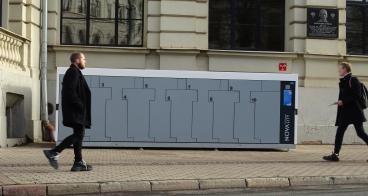Cooperation amongst competitors in Bologna's parcel distribution

The Challenge
In the scope of the URBANE project, the Bologna Living Lab (LL) has been implemented in the historical centre of the municipality, which has an area of about 4 km². The municipality has around 6,866 active commercial businesses, out of which 40% of them (2,656) are in the historical centre, and 2,312 lie within the Limited Traffic Zone (LTZ). As a result, the city centre is highly congested, and freight vehicles frequently turn to illegal parking.
The main challenges of the Bologna LL are:
- Developing and setting up a business model for an innovative delivery method in urban areas.
- Promoting collaboration between logistics operators that can be current or potential competitors in the logistics sector.
- Reducing the distance travelled by traditional delivery vehicles and consequently decreasing the negative externalities produced by them, such as road congestion, noise pollution, air pollution, lack of road safety or lack of urban public space.
- Introducing delivery methods that include the Physical Internet concept.
- Supporting the development of a Digital Twin (DT) of the logistics’ microhub network, fed with real time data and used for planning and implementing measures.
The Solution
The Living Lab aims to fulfil the policies listed in Bologna's Sustainable Urban Logistics Plan, namely the implementation of the first Nearby Delivery Area (NDA), combined with a collaborative approach between logistics operators, and implementing the use of zero emission vehicles.
The NDA is an area dedicated to logistics activities very close to the delivery area, and in the Bologna LL case, it is a micro consolidation centre for the transhipment of freight from conventional vans to Light Electric Delivery Vehicles. It is worth noting that the micro consolidation centre looks like a typical parcel locker, but it functions as a microhub in that it is used for the transhipment of B2B goods rather than for parcel collection in a B2C fashion.
The innovation provided by the Bologna Living Lab is that two potential competitors collaborate in the distribution of the parcels and use the same microhubs. This part of the business model represents a concrete step towards the Physical Internet (PI) concept. To fully achieve the PI vision, the Bologna Living Lab seeks to expand its collaborative network to encompass multiple transport operators and last-mile delivery providers.
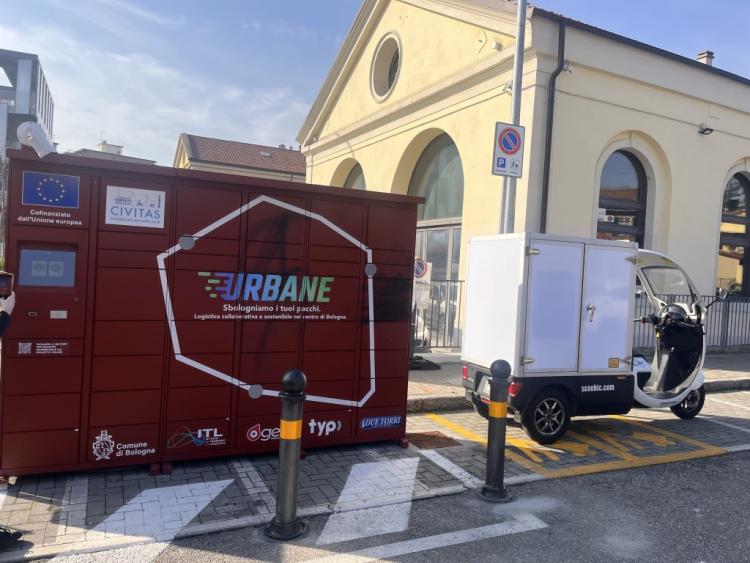
Making an impact
The three agnostic and automated microhubs located within the Nearby Delivery Areas (NDAs), are established in accordance with the SULP and SUMP policies. The future expansion of this solution will create a more dynamic and resilient logistics system, enabling greater flexibility, increased service levels, and reduced environmental impact.
By demonstrating the benefits of such collaboration, the Living Lab aims to inspire broader industry adoption of the Physical Internet concept. To support its expansion, Bologna initiated the development of a business model for innovative urban delivery services.
The use of the URBANE Digital Twin platform demonstrated significant potential to enhance operational efficiency and decision-making capabilities of both municipal and transport operators. In particular, the municipality can effectively plan future green logistics actions by simulating various development scenarios.
From a social perspective, expanding the use of agnostic microhubs could decrease the driver's need to make multiple stops and handle parcels individually, potentially resulting in less physical work and improved safety. The Bologna LL has also slightly contributed to reduce CO2 emissions in the intervention area, as demonstrated with obtained data such as that TYP (one of the logistics providers involved) saved about 3.298 CO2 kg a day (-52%) when compared to conventional door-to-door deliveries.
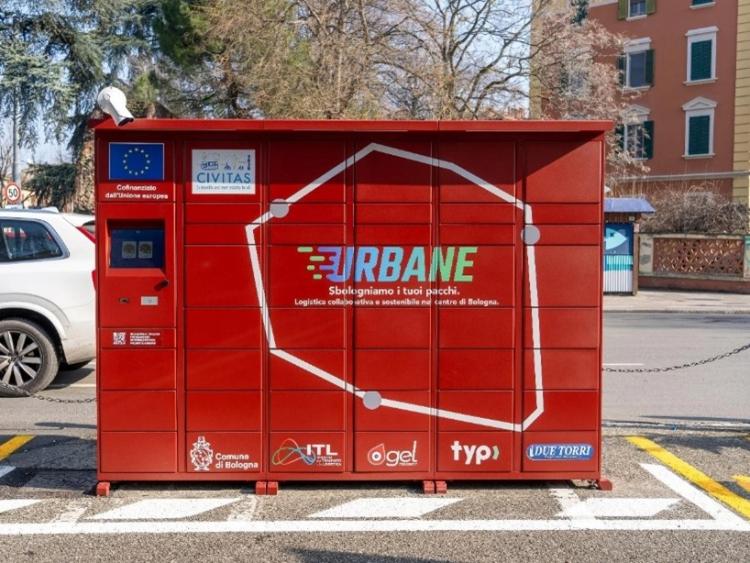
Lessons learnt
- Engaging transport operators in collaborative efforts outside the initial project partners is a common challenge for many cities. This difficulty stems from the operators’ diverse characteristics, specific needs, and concerns around data sharing and freight security. Bologna LL partners tried to involve the operators by holding tailored meetings, targeting not only smaller carriers but also major players such as UPS, GLS, and Poste Italiane. Despite already having their own contracted last-mile delivery providers, these larger operators were engaged to expand the pool of potential carriers.
- To optimise the microhubs’ potential, it is recommended to expand their capacity to include the handling of multi-item orders. This would enable a more comprehensive evaluation of collaborative logistics, considering the diverse needs of different carrier profiles.
- Some functionalities of the microhub management platform, including the blockchain module developed by URBANE technological partners, can be transferred to other cities. While this platform can facilitate a smooth, coordinated and secure delivery process for all stakeholders, it may present challenges for courier companies, such as additional costs and time required for system integration and staff training.
- The success of the solution depends on its adaptability to unique city-level challenges, initiatives, and regulatory frameworks. In Bologna, the pilot aligned seamlessly with the SULP.



